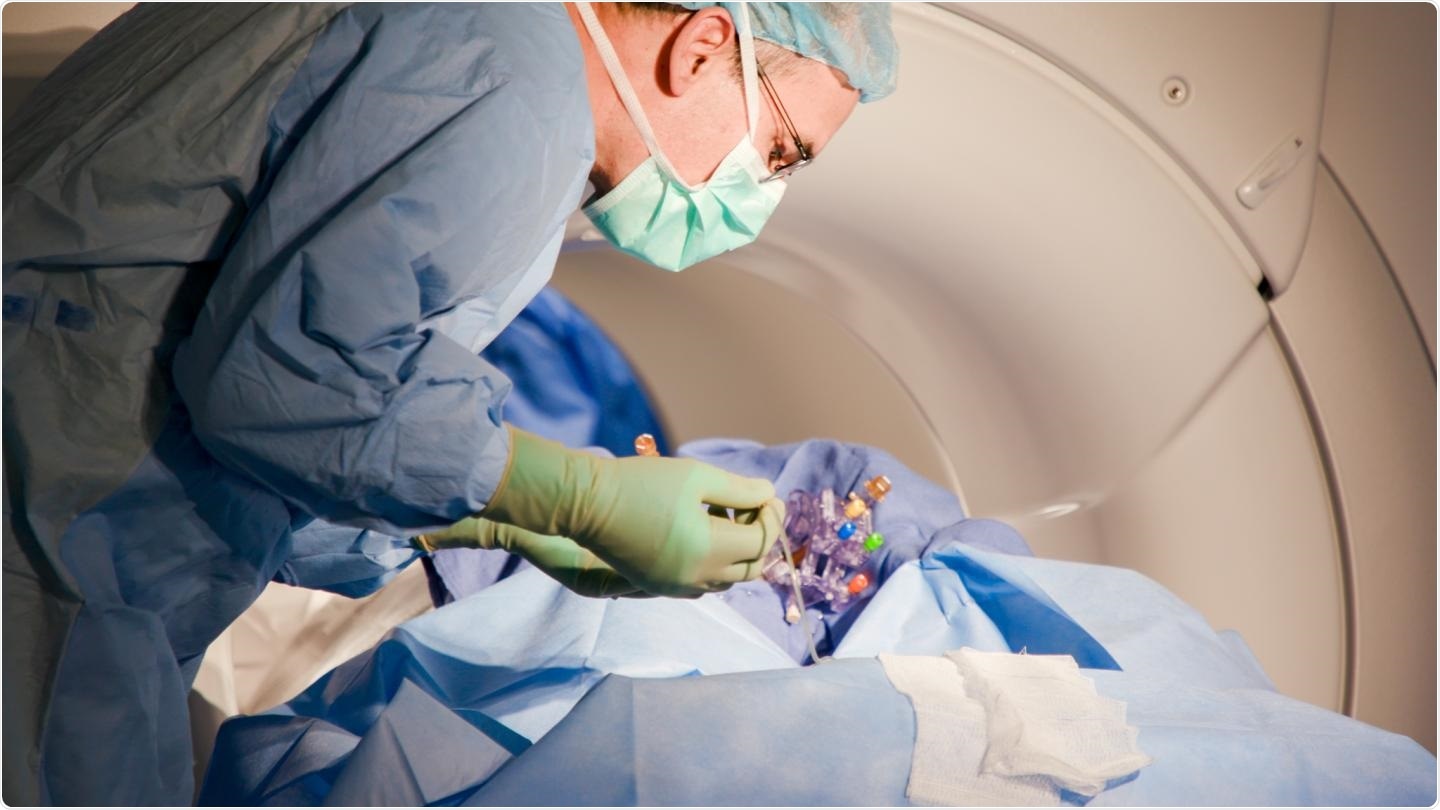Newly devised gene therapy can help children born with AADC, a rare genetic disorder that causes developmental and physical disabilities.

Dr. James “Brad” Elder performs a gene therapy brain infusion at The Ohio State University Wexner Medical Center. In a new study, the surgery resulted in unprecedented improvements in children born with a rare genetic disorder. Image Credit: The Ohio State University Wexner Medical Center.
The research carried out by scientists from The Ohio State University Wexner Medical Center and The Ohio State University College of Medicine grants new hope to people combating incurable neurodegenerative and genetic disorders. The results of the study have been published in the Nature Communications journal.
The research outlines the results obtained by directing targeted gene therapy to the midbrain to treat an uncommon and fatal neurodevelopmental disorder that occurs in children with a neurogenetic disease, aromatic L-amino acid decarboxylase (AADC) deficiency marked by the deficient synthesis of serotonin and dopamine.
Globally, as few as 135 children are known to lack the enzyme responsible for dopamine production in the central nervous system, which fuels brain pathways accountable for emotions and motor functions. The absence of this enzyme leads to a lack of muscle control, inability to feed themselves, hold their head up, or inability to speak in children. Children may also suffer from oculogyric crises, the seizure-like episodes that last for hours.
Remarkably, these episodes are the first symptom to disappear after gene therapy surgery, and they never return. In the months that follow, many patients experience life-changing improvements. Not only do they begin laughing and have improved mood, but many can begin speaking and even walking. They are making up for the time they lost during their abnormal development.”
Dr Krystof Bankiewicz, Study Co-Author and Professor, Neurological Surgery, Ohio State College of Medicine
Dr. Bankiewicz leads the Bankiewicz Lab at Ohio State College of Medicine.
Seven children aged 4 to 9 were selected as part of the study for introducing directed gene therapy. They were infused with the viral vector, and the results showcased striking improvement of symptoms, quality of life, and motor function. Six children were treated at UCSF Benioff Children’s Hospital in San Francisco, and the other child was treated at Ohio State Wexner Medical Center.
Bankiewicz noted that this therapeutic modality assures transformation in the treatment of AADC deficiency and other brain disorders eventually.
In the course of the gene therapy surgery, physicians infused a programmed benign virus with specific DNA into precisely targeted areas of the brain. The delivery of the infusion is done gradually as surgeons monitor its spread within the brain with the help of real-time MRI imaging.
Really, what we're doing is introducing a different code to the cell. And we're watching the whole thing happen live. So, we continuously repeat the MRI and we can see the infusion blossom within the desired nucleus.”
Dr James “Brad” Elder, Director, Neurosurgical Oncology, Neurological Institute, Ohio State Wexner Medical Center
Scientists consider that this process of gene therapy can be employed to treat other genetic disorders besides common neurodegenerative disorders like Alzheimer’s and Parkinson’s disease. Clinical trials are ongoing to test the efficiency of this procedure in people living with incurable and debilitating neurological conditions.
The directed gene therapy approach, in the patients, brought forth significant improvement in motor functionality, symptoms, and quality of life. The therapeutic modality assures transformation of AADC treatment besides other brain disorders eventually.
Source:
Journal reference:
Pearson, T. S., et al. (2021) Gene therapy for aromatic L-amino acid decarboxylase deficiency by MR-guided direct delivery of AAV2-AADC to midbrain dopaminergic neurons. Nature Communications. doi.org/10.1038/s41467-021-24524-8.